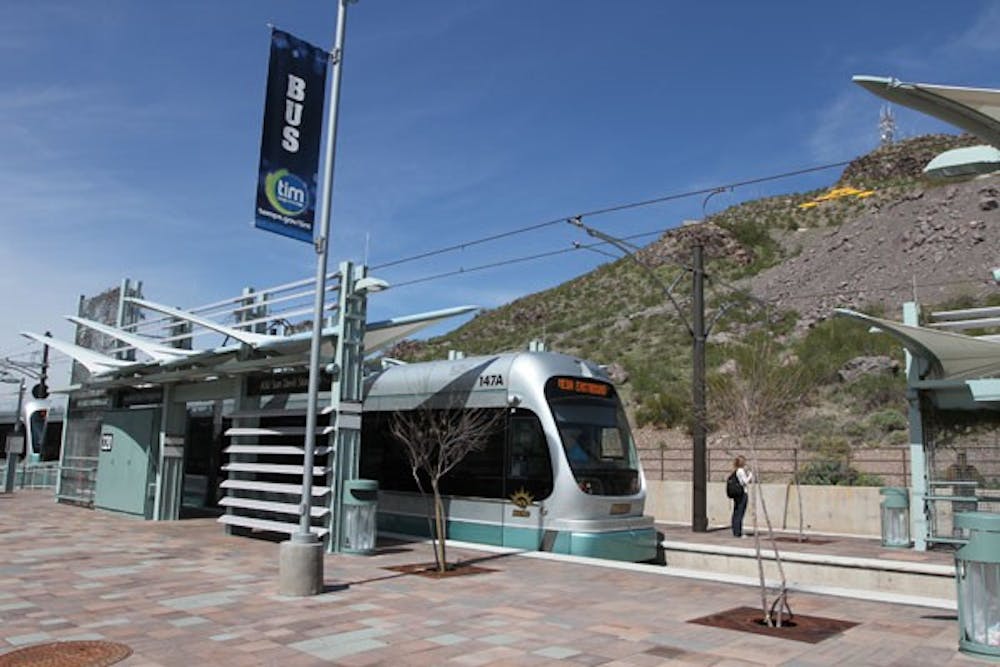Tempe’s tight budget is leading the city to consider selling advertising space at light rail stations.
Allowing advertisements at stations could bring in $50,000 a year, said Sue Taaffe, marketing coordinator for the city of Tempe.
A May 2003 decision from the Metro light rail Board of Directors currently prohibits advertising at light rail stations in Tempe.
Amanda Nelson, community outreach and marketing supervisor for the city of Tempe, said the city is looking into advertising possibilities.
“In the past it has been a matter of aesthetics — there’s not a lot of visual clutter (in Tempe),” she said. “Tax revenues are down, the budget is suffering, that’s why we’re taking a look at it now — to see if it’s something our city council wants to move forward with.”
Taaffe said the proposal will have to go through the city attorney and then the city council.
“The city code that prohibits advertising has been in place for many years,” she said. “We’re looking at additional revenue sources.
Some other sources may include 50-cent fares for the Orbit bus system, she said.
Hillary Foose, spokeswoman for Metro Light Rail, said the city of Phoenix had the same ‘no advertising’ rule as Tempe, but amended that policy in July.
“There are typically four display cases at every station — only two are allowed to have paid advertising,” she said.
Phoenix finalized an agreement with CBS Outdoor, a full-service advertising agency, in October to sell ad space at light rail stations, Foose said.
Under the policy, Phoenix receives 67 percent of the money that comes from advertisements at light rail stations, Foose said.
“We haven’t received much payment yet because the program is still new, but we’re excited to see advertising starting to happen,” she said.
Taaffe said the potential advertising revenue has to be approved by the Tempe City Council.
“If all [Tempe] stations advertising spaces are sold in maximum capacity, the city could generate $50,000 a year,” she said.
Adrian Mahlstede, a freshman in the Walter Cronkite School of Journalism and Mass Communication rides the light rail two to three times a week.
“I wouldn’t mind the advertising if it would cut down costs,” he said. “But I’ve seen the billboards by the light rail, they look kind of dumb.”
Mike Janowski, a 28-year old Chandler resident and a December 2008 ASU graduate in interdisciplinary studies, said the city council should allow advertising.
“When a new city council is looking to cut routes and charge [for] the Orbit, they need to go back and revisit the old judgments,” he said.
If the city is going to charge its citizens, it needs to look at different ways to generate more revenue, he said.
“They’re not making enough to provide services. There is another way,” he said. “What’s wrong with advertising?”
Reach the reporter at mmbarke1@asu.edu





